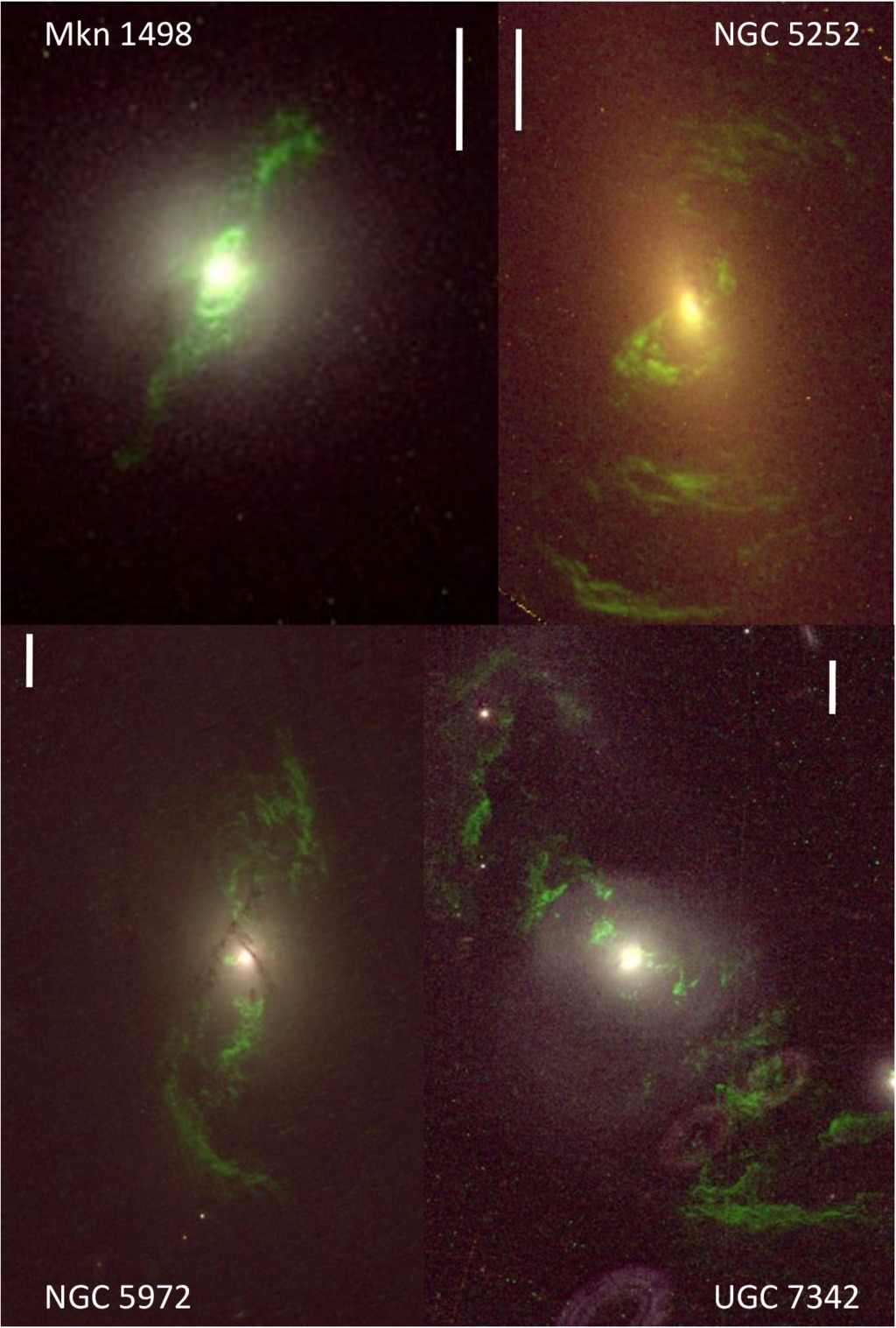HST Imaging of Fading AGN Candidates I: Host-Galaxy Properties and Origin of the Extended Gas
-
 by
c_cld
by
c_cld
William C. Keel, W. Peter Maksym, Vardha N. Bennert, Chris J. Lintott, S. Drew Chojnowski, Alexei Moiseev, Aleksandrina Smirnova, Kevin Schawinski, C. Megan Urry, Daniel A. Evans, Anna Pancoast, Bryan Scott, Charles Showley, Kelsi Flatland
ABSTRACT
We present narrow- and medium-band HST imaging, with additional supporting ground-based data, for eight galaxies identified as hosting fading AGN. These are selected to have AGN-ionized gas projected > 10 kpc from the nucleus, and energy budgets indicating a significant shortfall of ionizing radiation between the requirement to ionize the distant gas and the AGN as observed directly, indicating fading of the AGN on ~ 50 000-year timescales. This paper deals with the host-galaxy properties and origin of the gas. In every galaxy, we identify evidence of ongoing or past interactions, including tidal tails, shells, and warped or chaotic dust structures. Several systems show multiple dust lanes in different orientations, broadly fit by differentially precessing disks of accreted material viewed ~1.5 Gyr after its initial arrival. The host systems are of early Hubble type; most show nearly pure de Vaucouleurs surface-brightness profiles and Sersic indices appropriate for classical bulges, with one S0 and one SB0 galaxy. The gas, generally found spectroscopically to have low metallicity and lie near the galaxies' rotation curves, is consistent with an external tidal origin, although the ionized gas and stellar tidal features do not always match closely. Unlike extended emission regions around many radio-loud #AGN, these clouds are kinematically quiet and generally follow organized rotation curves, consistent with tidal debris ionized by the AGN with no significant global outflows. Some of the gas structures (notably the 5-kpc offset loop in the "#Teacup" system) remain mysterious. Within the gas clouds, [O III]/Hα ratios often trace distinct ionization cones. We find only a few sets of young stars clusters potentially triggered by AGN outows. In UGC 7342 and UGC 11185, multiple luminous starclusters are seen just within the projected ionization cones, potentially marking star formation triggered by outflows. As in the discovery example Hanny's Voorwerp/IC 2497, there are regions in these clouds where lack of a strong correlation between Hα surface brightness and ionization parameter indicates that there is unresolved fine structure in the clouds. Together with thin coherent filaments spanning several kpc, persistence of these structures over their orbital lifetimes may require a role for magnetic confinement. Overall, we find that the sample of fading AGN occurs in interacting and merging systems, that the extended ionized gas is composed of tidal debris rather than galactic winds, and that these host systems are bulge-dominated and show no strong evidence of triggered star formation in luminous clusters.Subject headings: galaxies: active | galaxies: individual (#NGC 5792, #NGC 5252, #UGC 7342, UGC
11185, #Mkn 1498) | galaxies: #Seyfert | galaxies: interactingComments: Submitted to Astronomical Journal
Subjects: Astrophysics of Galaxies (astro-ph.GA)
Cite as: arXiv:1408.5159 [astro-ph.GA]

Posted